
Volkswagen T-Roc Review 2021

Introduction
We’re far from the ‘crossover’ craze being a new thing - since the turn of the last ‘10s, buyers have been flocking to these hatchbacks-turned-pseudo off-roaders in droves.
It was perhaps a surprise then that it took Volkswagen until 2017 to introduce a proper contender in the crossover market with this, the T-Roc. Though it lagged in time, it immediately arrived as a frontrunner in the B-segment SUV market - delivering big on practicality and driveability.
Three years on though and that market has only grown more competitive. Does the T-Roc remain one of the choice crossovers to have, then? We take a look...
Select's rating score* - 4.1 / 5
At a Glance
Say it like a Yorkshireman and the T-Roc may sound like you’re referring to a solid aggregate of minerals or the WWE wrestler/Hollywood actor. In reality, though, it kicked off a new naming convention for Volkswagen’s SUVs continued by the introduction of the smaller T-Cross in 2019.
The best way to think of it is like a Golf on stilts. It’s comparable in terms of space to the eternally-popular hatchback, albeit with the benefit of a higher ride height and more imposing presence on the road.
Though it’s a fairly understated thing, those looking for a quirkier performance car have the option of an R model, and there’s even a drop-top Cabriolet variant if you want a left-field fun car.
Key Features
Volkswagen hasn’t tacked on much in the way of headline-grabbing quirks for the T-Roc, but that’s not to its detriment. Key assets of the crossover are its respectable practicality, solid build quality and surprisingly entertaining driving experience. That final point comes thanks to chassis engineer Karsten Schebsdat, who had a hand in developing the impressive Golf GTI Clubsport S as well as spending time at Porsche.
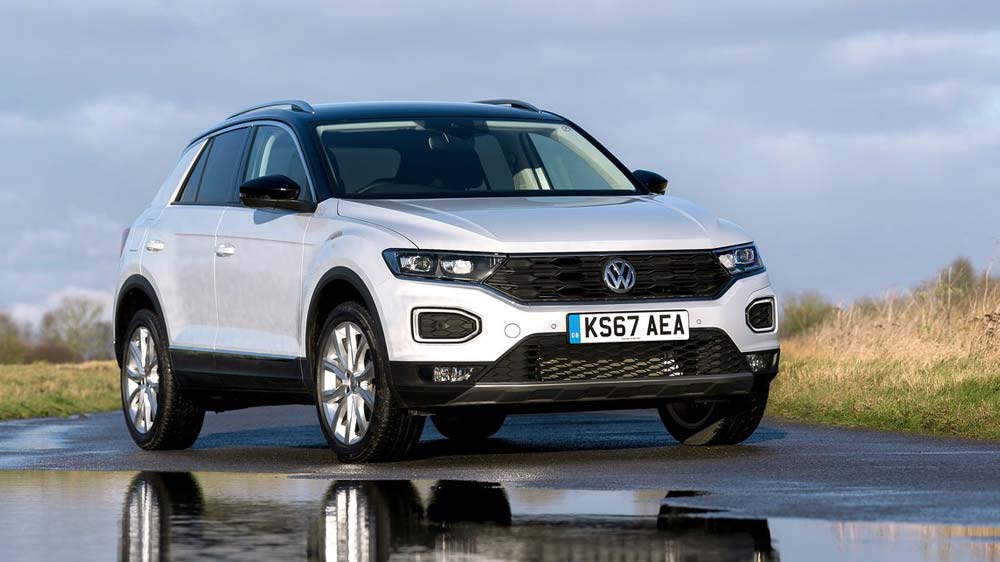
That said, there are also impressive tech highlights. Volkswagen’s Digital Cockpit Pro system is present on higher-spec models, while numerous safety features are included to add a bit of peace and mind while behind the wheel.
Performance & Drive
For our money, the 1.5-litre TSI is the engine to have for the T-Roc. Its 150hp output brings more than enough performance for a car of its size, needing minimal effort to make the most of while delivering respectable efficiency too. The six-speed manual is our preferred option, but the seven-speed DSG automatic is smooth enough to be recommendable.
There’s a 115hp, 1.0-litre TSI on offer too - said to be more efficient - which takes more work to get the most out of and in the real world won’t be leaps and bounds ahead in fuel consumption terms of the larger unit. A 2.0-litre, 190hp TSI is offered too but the increased list price and running costs don’t justify the performance in this kind of car. Diesels aren’t a particularly trendy option in the current climate but there’s a choice of two on the T-Roc. A 1.6-litre and 2.0-litre TDI can be had with both suiting the T-Roc’s package well, though don’t offer worthwhile increases in efficiency to recommend over petrol offerings.
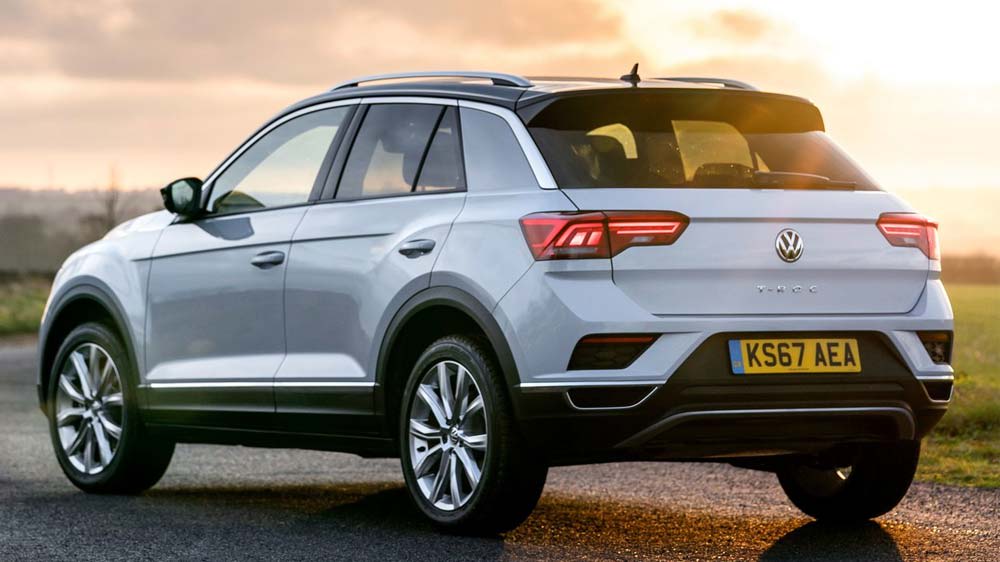
If you’re fancying an element of lunacy to your crossover, there is the high-performance R. This nicks the 300hp, 2.0-litre TSI and 4Motion all-wheel-drive system from the Golf R - good for 0-60mph in 4.8 seconds and a 155mph top speed. It’s not some hardcore, pseudo-race car but it’s a thrilling experience nonetheless.
Running Costs
As you should expect from a mid-size crossover, it’s not going to drain your wallet to run a Volkswagen T-Roc - even if you opt for an R.
If sheer day-to-day affordability is top of the list, a 1.0-litre TSI-equipped T-Roc is the one to have with Volkswagen claiming a fuel return of up to 53.3mpg. It’s not a wholly unrealistic figure either, though expect reality to be closer to high 40s if town driving makes up the most of journeys.
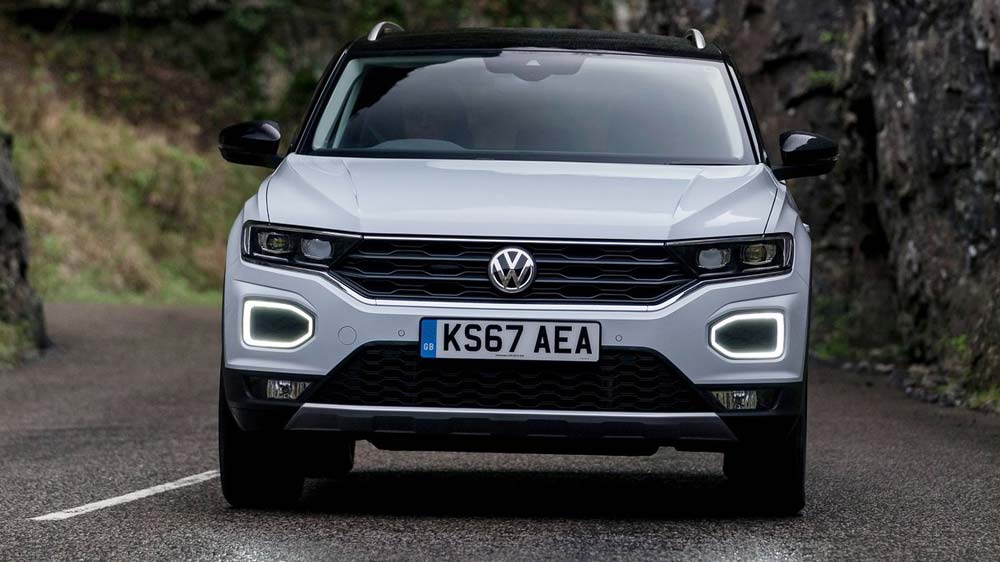
The sweet spot between performance and efficiency is the 1.5-litre TSI. I’ve already touched on its driveability, but it’s frugal too with claims of up to 47.9mpg when linked up to a six-speed manual - although dropping to 41.5mpg if paired to a seven-speed DSG automatic. Diesel-equipped T-Rocs are said to return up to 47.9 and 44.8mpg for manual-equipped 1.6-litre and 2.0-litre TDI units respectively, with the latter rising to 49.6mpg when linked to the seven-speed DSG.
Least efficient of all, expectedly, is the R - with its 2.0-litre TSI unit claimed to return up to 34mpg. Not bad when you consider it produces 300hp, mind.
With smaller capacity engines deployed throughout the Volkswagen T-Roc range, emissions are fairly low and about par for the course of an SUV of this size. For 1.0-litre TSI equipped cars, CO2 output weighs in at 133 or 134g/km depending on configuration, with 1.5-litre TSI powered variants seeing that range rise a little to between 144 and 154g/km.
There’s a 2.0-litre TSI available in the regular range as well, with emissions for T-Rocs equipped with it emitting 186g/km. High-performance R variants kick out 196g/km - a figure perhaps to be expected from a 300hp crossover.
For diesel, 1.6-litre TDI variants emit between 137 and 146g/km, with those figures rising to between 140 and 154g/km for 2.0-litre TDI models.
Interior
If you’re at all familiar with Volkswagen’s products, the interior of the T-Roc is predictable. Control placement is excellent, fit-and-finish is impressive and the level of quality is even more so - but it’s a bit soulless.
Materials used are all of a good standard, albeit some scratchy plastics are present on the dashboard - though don’t let that deter you from the overall quality.
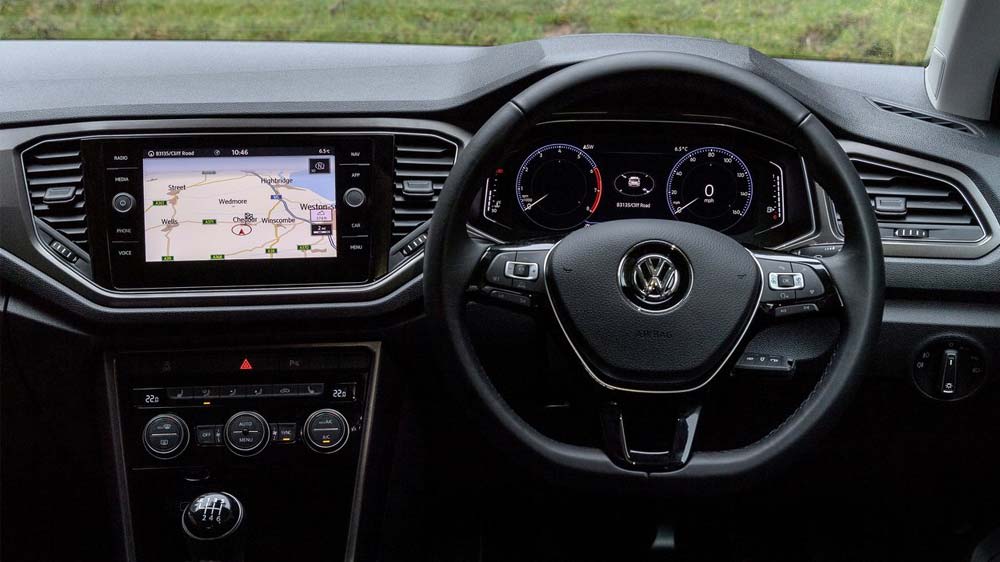
If there’s anything to mark anything down here, it’s the cloth seats in lower-spec trims. They’re fine for shorter trips but become particularly uncomfortable over long distances. For my money, I’d tick the options box for part-leather seats.
Spend your money on the high-performance R and an array of blue inserts do liven the cabin up a little but don’t expect some stripped-out, race-car like affair here. It’s all quite plush still.
Though there is some pretty impressive technology to be had on the Volkswagen T-Roc, don’t expect it all without a cost. In its base S guise, the SUV is pretty barren on the equipment front, with the only real luxuries a basic 8.0-inch infotainment system (a more sophisticated ‘Discover’ system with navigation comes at a premium) and combination LED rear lights.
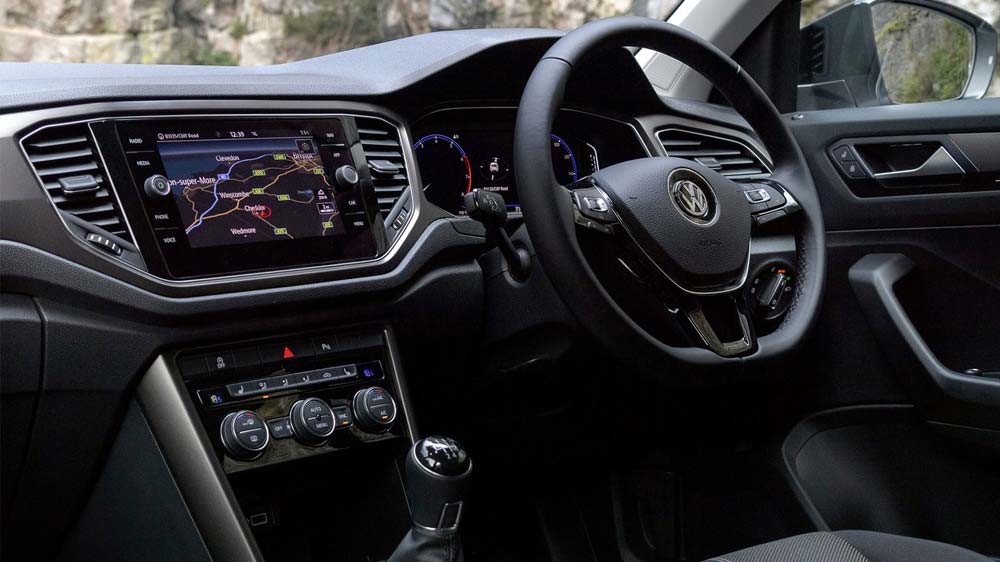
Move up to SE and things get a little better, with front and rear parking sensors join the fray, as does a height-adjustable driver’s seat. United adds to that with heated seats and automatic coming home/leaving lights (this puts the lights on when the car is unlocked and leaves them on for a short time after locking it again) while Design takes it a step further with white interior ambient lighting.
SEL is when things get generous, bringing LED headlamps to the package as well as VW’s Digital Cockpit Pro - replacing traditional dials and gauges with a crystal-clear digital display. Sitting at the very top of the pile is R-Line. As well as a trendy-looking bodykit, this brings full LED lights and daytime running lights.
Practicality & Boot Space
In terms of space, the T-Roc is essentially a Golf on stilts. There’s space for five in both hardtop and Cabriolet variants - albeit taller passengers may find the rear a tad cramped, and the two-door nature of the drop-top will make accessing the back a little fussier.
Front-driven T-Rocs boast 445 litres of boot capacity with all seats and the parcel shelf in place, while all-wheel-drive 4Motion models - high-performance R included - see that dip to 392 litres. To make another Golf comparison, that’s comfortably more than the hatch’s 380 litres.
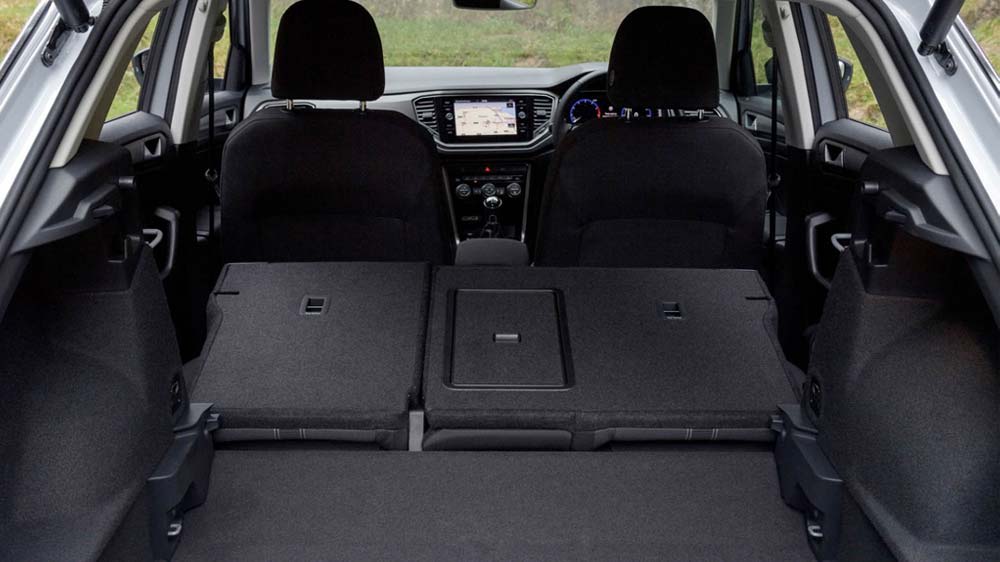
More to the point, it’s among the leaders in its class. The MINI Countryman and Volvo XC40 do edge it out at 450 and 452 litres respectively, but the T-Roc comes out comfortably ahead of the Audi Q2’s 405-litre capacity.
Opt for a Cabriolet and boot space does see a dramatic drop to 280 litres, but that’s a price to pay for top-down motoring in a quirky package such as this one.
Safety
When Euro NCAP put the T-Roc through its paces back in 2017, it returned a five-star rating - the maximum available. Though the safety board has tightened things up a little in its scoring system since then, it’s fair to assume the chunky VW remains a literal safe bet.
A large part of that peace of mind comes from its level of standard safety equipment. Right from base S guise, the T-Roc features VW’s Front Assist automatic emergency braking system at no extra cost. Pedestrian monitoring is included as part of that, with both working to minimise the risk of low-speed accidents. Lane-keeping assistance features, too.
Moving up to SE brings front and rear parking sensors into the fray, while high-spec SEL sees the introduction of the German manufacturer’s Driver Alert functions. With this equipped, the T-Roc monitors the driver’s inputs - essentially looking for erratic steering and lane deviations - and gives a reminder to take a break if things seem a little off.
Blind-spot monitoring is available as part of the optional Side Assist Plus package, which brings Rear Traffic alert as well - giving the T-Roc the ability to monitor traffic while reversing and make an emergency stop if need be.
A must-have in our eyes is the pre-crash preventative occupant protection option as well. This automatically tenses up the seat belts, closes the windows and panoramic sunroof (if selected) as well as putting on the brakes in the event of an accident. It’s not something you’ll ever want to use, but likely be grateful for if it’s ever needed.
Options
Though Volkswagen already offers the T-Roc in a wide range of guises - with S, SE, United, Black Edition, Design, SEL and R-Line all available on the standard SUV at the time of writing - there’s plenty of choice on the options list to bolster equipment levels too.
Even in range-topping R-Line, there’s the ability to spec a panoramic sunroof, keyless entry, an electric tailgate and a Beats audio system just to pick out a handful. Arguably most of this should be included anyway at the range-topping T-Roc’s £29,030 price tag - which can easily surpass £35,000 if you’re a little generous with the clicking.
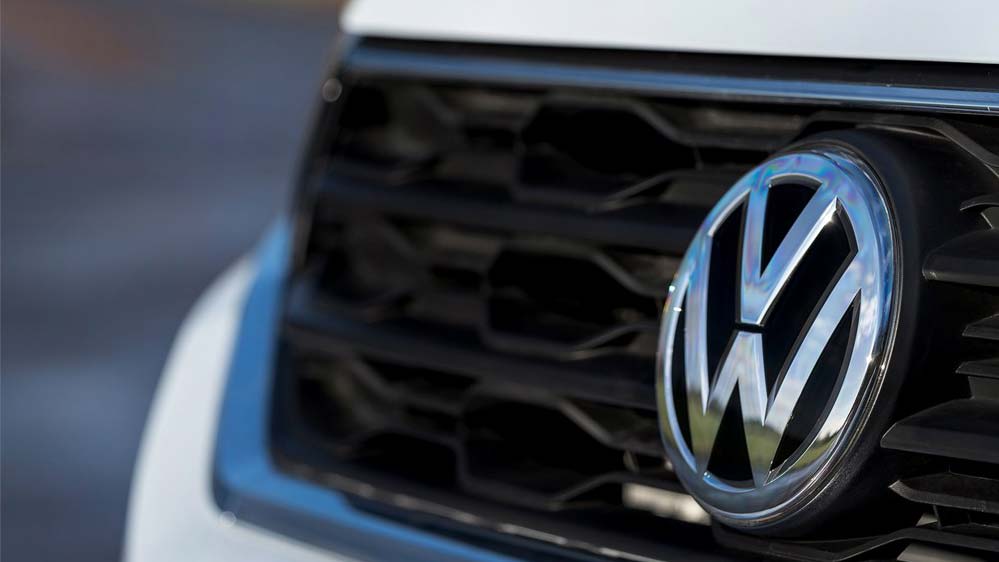
The good news for those preferring a lower grade can handpick some of the appealing features of higher-spec models additionally. Already mentioned in this review are the plusher part-leather seats in place of cloth items, while other key bits to option include full LED headlights, parking sensors and a leather-trimmed steering wheel.
Spec a high-performance R, and there’s even more to choose from. Tack on the crisp-sounding Akrapovic exhaust and you’re immediately looking at £3,000 on top of its £38,450 starting price, and that’s before looking at interior options and paint colours (White is standard, but jazzier hues command fees).
Who Rivals The Volkswagen T-Roc?
Squaring up firmly to the Volkswagen T-Roc is the MINI Countryman. Arguably the former’s Anglo-German rival beats it for style, practicality and also for having electrified options, though prices are marginally higher and the T-Roc beats it for driveability. That last point very much applies to the R too, with the Countryman John Cooper Works an underwhelming attempt at a performance car.
Another key competitor is the Volvo XC40. The Swede does perhaps lack an edge in quality that may be expected for its higher price compared with the T-Roc but has it comfortably beat for practicality and variety of petrol, hybrid and even electric (albeit very, very pricey) powertrains on offer. Volvo doesn’t offer a diesel, however.
I’m also looking at the Audi Q2 here - a T-Roc rival within the VW Group umbrella. Though the Audi carries a more premium badge, there’s not a leap in quality that may be expected and the T-Roc offers better practicality and driveability over its four-ringed cousin.
Verdict & Next Steps
It’s fair to say the Volkswagen T-Roc doesn’t do anything out of the ordinary (well, maybe the Cabriolet does) but that’s a large part of its appeal. As far as a practical, somewhat stylish and well-built SUV goes, this ticks all of the boxes.
There’s an argument to be had on a value for money perspective - with much of its must-have equipment locked behind the options list - but there are no complaints in terms of space and driveability.
It doesn’t win many points as a head-turner though. If that’s what you’re looking for, something from the MINI Countryman lineup might be more appealing - or go for the T-Roc Cabriolet if you don’t need the practicality but simply must have an SUV.
Where to next?
View latest VW T-Roc car leasing deals - from just £206.48 per month inc VAT**
Looking for a great deal? Check out our incredible range of car lease deals
Stylish new crossover SUV? Read our latest Car Reviews and find the right model for you
Want to know more about leasing? Take a look at our comprehensive Leasing Guides
Interested in everything motoring? Why not catch up on all the latest Car Leasing News.
*Score based on Select’s unique meta score analysis, taking into account the UK’s top five leading independent car website reviews of the VW T-Roc
**Correct as of 09/12/2020. Based on 9 months initial payment, 5,000 miles over a 48 month lease. Initial payment equivalent to 9 monthly payments or £1,858.36 Ts and Cs apply. Credit is subject to status.



















